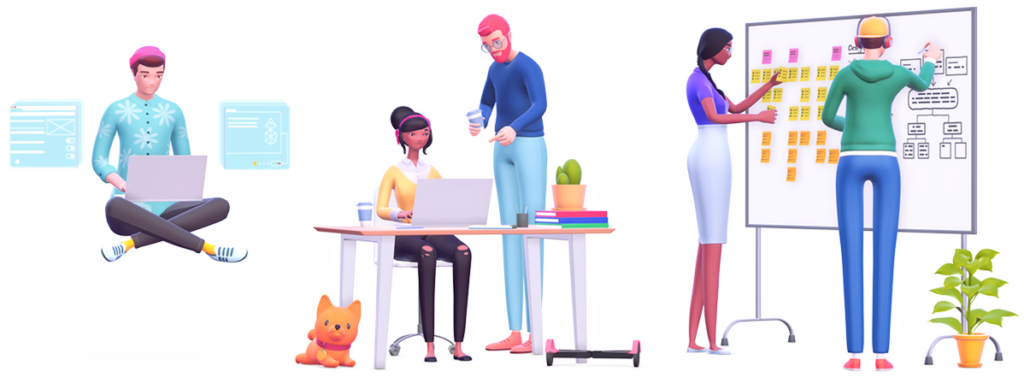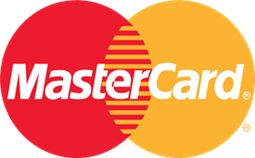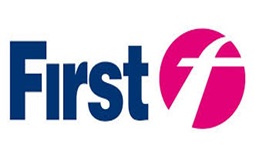







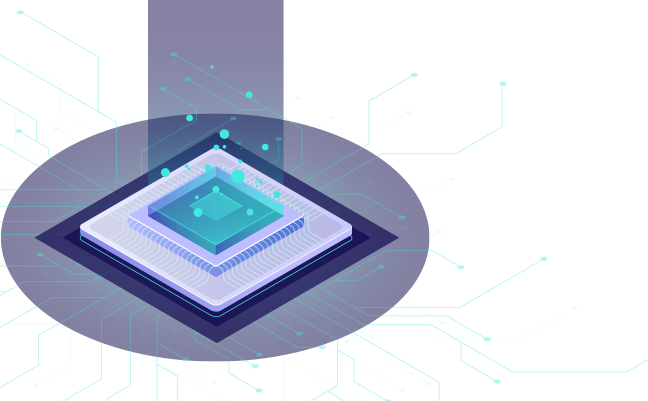
World-class developers, designers, and testers:
Our new team of specialists and experts are ready to support you at any time within 24 hours. Our value is not only about building teams but we guarantee and own the fruitful delivery of all the projects in hand.


Trusted by 100+ happy clients including these Fortune companies
Benefits of working with Syntrino:
Easy team leeway to eradicate complexity from hiring
Though finding freelancers and developers is easy, vetting and making sure to get the right person you want. It takes a minimum of 1 month to hire the right team of 5 people, bring them on board and start them working on the project. Though in the end, you are still not sure whether you made the right decision or not.
On top of that, you’re busy
You have a lot of activities like shipping the product, hitting the deadlines. You can’t expect, your higher management to shift their focus to recruitment while that can be spent at achieving better goals. Our Devoted Development Team model is meant for companies who want to swiftly ramp up their internal team without any trouble.
The talent pool at scale
We can help you, quickly scale up or down, without any troublesome hiring process. Syntrino offers you flexibility in extending your team strength with hundreds of developers with a wide range of skillsets.
Reduce overheads
As there are no infrastructure or any associated costs of hiring full-time employees, you can simply cut down on this cost well as its operational. Most prominently there will be no market revenue losses in this process.
How we help you find the best talent
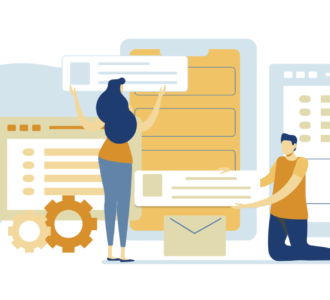
Contact us about your project
Once you contact us and tell us about your project goals and requirements (better when it’s more), our experts then connects with you. They conduct a series of meetings to learn about your project, business goals, tech stack, and other stuff that describe your project’s requirements.
Tech roadmap with a hiring plan
We establish a roadmap with a hiring plan including skill set and experience your team need, keeping your company’s goals in mind. We include things like the type of tech stack to be used and how to traverse through tech intricacies of the project.
.


Obtaining talent to match your needs
As a first step, we look internally if we can get that right candidate. If not, then we knock into our talent network and see if we can find something through our partners. If not then we run campaigns, quest, and use our enrolling strength to hire entrants that match your needs.
Our screening process
Once we find the right candidates, first we let the candidate interact with you through a series of video interviews. Through this, you can understand their analytical, problem solving and communication skills. We strive to get you the people with highly relevant skill sets that can meet your project needs.


Test projects to measure skills
Wide-ranging small project tests are given to each designer. We do test their technical intelligence through the automated coding exam. We focus on language-specific and algorithm knowledge as well as general programming
SYNTRINO Guarantee:
We are certain that if the client’s project takeoffs smoothly, they will come back to us for more.
We’re enthusiastic to over-invest in promising results, rather than under-invest and let our financial
reports look pretty in the small-run. We propose a risk-free trial period of about 2 weeks. After 2 weeks,
you will only have to pay us if you are happy with the designer and wish to endure with us. If you are
displeased, we’ll refund payment or fix the matter with a dime.

Frequently Asked Question (FAQ)
-
What if I don't have a project spec or job description written out?
Whether your project is at the first ideation stage otherwise you have all features drawn out, our tech consultation team works with you to organize an in depth tech solution and execution plan. We are huge believers in high output management and everything we propose from tech architecture to talent skill set will specialise in getting results and speeding up the time to plug .
-
When is ‘dedicated software development team’ a good choice for software development?
There are many benefits of hiring a dedicated development team. Transparency of the process, sharing the business responsibilities, access to control the progress of work and building the team quickly are the main benefits. Here are some of the reasons when hiring a dedicated development team is a good choice: - When you want to save costs in terms of overhead expenses and infrastructure as compared to the increase in the inhouse staff - When there is a shortage of software developers and talent or lack of particular technical skill set in your area - When you want to put minimal efforts from your end to set up a new team - Seasonal or cyclical workload with strict deadlines - The minimization of risks with competent project management and trusted operating processes - You need a shorter starting cycle and learning curve in comparison to the in-house arrangement. - If your in-house team lacks in technical expertise required for software development.
-
How much time is required to assemble the right team?
It depends on the complexity of the project. Some clients entrust the selection of team members to respective project managers and incline with their choices. Whereas, others make it essential to be a part of all the scheduled interviews and personally give a thorough review of their resume. It takes a maximum of 3 days for our clients to receive a list of developers. On average, the whole process takes 7–10 days to create an expert team. On an equivalent hand, what makes the experts stand call at the gang is “approach”. Like if you need a team of 15 people, firstly it will be recommended to hire 4–5 developers and then gradually increasing the team size. This method is a tried-tested approach to hire the best candidates to cement your footprint with your project.
-
What is the development process your dedicated development team follows? What are your development process steps?
Here’s how we will work with you - 1) Test Cases Driven User Stories for Clear Requirements - When our engagement with the client starts we help them create detailed user stories and scope out the next few sprints. 2) Intense Sprint Planning In order to execute projects on time, you need to plan sprints as much as possible. 3) Iterative Delivery Typically, in an agile development process, we will divide the implementation process into several checkpoints rather than a single deadline. They are called iterations and are part of each sprint. 4) Documentation We document everything from application and code level architecture decisions, to live user stories document, to design focused UX/UI/Design System documents. 5) Constant Communication and Retrospective Stand-Up Each workday begins with a brief team stand-up meeting to discuss what we did yesterday, and what we plan to do today. 6) Code review A successful peer review strategy for code review requires balance between strictly documented processes and a non-threatening, collaborative environment. 7) Integrating QA in the development process We have gotten much better about integrating QA in our development process. We used to loop QA in after our code was pushed to the master branch, which was clunky. Now our QA engineers will identify and create a test plan as soon as we begin working on the next sprint. As initial development nears completion, an engineer and a QA engineer will run through test scenarios together. 8) CI CD and Automating Deployment Easily release and deploy solutions by making the build process easier by building CI CD pipeline. The developer's changes are validated by creating a build and running automated tests against the build. 9) Post-release It’s important to circle back and review how the process went once you’re done, be it a success or failure. Did the testing correctly model the production scenario? Did the group effectively gauge the exertion required to discharge an item? How is the product running in production? Review how well the team performed by revisiting the implementation and testing checkpoints. Your team will adjust their performance accordingly as they grow used to being held accountable for every step in this process.
-
How do you make sure software has great UI and UX? How do you integrate design and development teams?
Our developers are creative technologists who also understand design. This unique combination of skills ensures that our designs will fit within the framework of your systems and give your customers a better experience. Building software with great UX requires changing the Agile process to fit in UX designers needs. Understand technical constraints first to save time We try to understand the technical constraints and design with them in mind. Collaboration with development can help us identify the design that could be technically prohibitive. This allows us to adapt before we have invested time in refining or testing a design. Research and test before, during, and after development. As UX Designers, we are able to identify friction in a UI and resolve it before it even goes into development. Often with more complex interactions, it can be difficult to fully prototype these experiences. Being able to test throughout the process we are able to reduce our risk and increase our confidence in the design. Have time to design for both microinteractions and the big picture. When we do get in the trenches it’s easy to lose sight of the bigger picture but our approach makes sure overall user goals and ease of use are maintained. Adapt quickly to new information. Another great reason to integrate UX Design with the development process. When you aren’t working with development, no matter how hard you try, you’ll be slowed down reacting to new data and iterating on features. Be quick. Simply said, if we can reduce the time from concept to customer’s hands we win. In Kanban, cards flow from left to right across the board. There isn’t an encapsulated sprint (but that doesn’t mean you don’t have deadlines). So here a UX Designer can pull a card from the top of the backlog. They are able to plan their research, create prototypes, and design the feature. Once done, they mark that card as such. When a developer becomes available, they are able to pull cards marked as done in design. Our design work won't have to sit for as long lost in the bottom of a backlog. We do create a little segregation, but less so than either of the other two. Since everyone is on the same board, everyone is on the same team. We are all trying to move cards from one side to another and appreciate the dependencies we have on each other.
-
How is Syntrino different from other online talent marketplaces, local agencies, and software consulting companies?
Freelance marketplaces like Upwork, Toptal, Gigster, Freelancer, etc can help you get in touch with thousands of developers. They provide transparent access to devs but you have to vet candidates and take care of everything. These platforms do not provide a guarantee of delivery and results. Tech agencies and software consultancies follow outdated engagement and execution models. The teams and devs hired through them don't integrate with your team well. Transparency and collaboration are lacking. We started Syntrino with the goal of bringing assurance, certainty, and transparency in the software development services space. Most of our competitors provide TRANSACTIONAL services. You post a gig, they match you up with a developer and you take it from there. We aren't a transactional service.
-
How well will the team understand my business domain, product, and vision?
We start a project with a “Discovery Phase”. One of the outcomes of this phase is a list of features that the software will have. Those features then get broken into stories, and we write each story from the perspective of a Stakeholder of the system. User stories are easily digestible user behaviour flows detailing how user will achieve goals. Then, for each story, we work with the clients to discover examples of how that specific stakeholder or end user uses the tool we’re building. Not only do we look for examples of success, but also examples of failure. And finally, we ask if there are examples of different ways to do the same thing. These scenarios are a list of actions that deliver value to this stakeholder. Goal here is to build ubiquitous language and shared understanding between, developers, team members, stakeholders, and customers. We use ATDD + BDD approach to create these user stories. This format has worked wonderfully for us as it helps Development Team (developers, QA, designers, TL) understand the acceptance criteria and goals of functionalities and features. Not to mention it generates lots of conversations between Tech team and stakeholders which helps increase shared understanding amongst everyone. A point that is sometimes understated around this common language, is that the developers are learning not only the words used by the business but what they mean when they interact with each other in different contexts of the software. This is a hard piece of learning to come by without a structured way of using concrete examples to uncover details about the business. To explain the point of SHARED UNDERSTANDING AND BDD, we have to start by accepting this simple premise: A large part of the challenges faced by software development projects are communication problems. Behaviour Driven Development is a way to: - Structure communication to describe examples of how to use the software, these are called “scenarios”. - Capture scenarios from the perspective of the stakeholders of the system - Learn and Use the language and terminology of the business - Gather just enough details of the system to be able to set a preliminary estimate - Leverage the scenarios as executable tests that drive the design of the software - Developers and clients work together to agree on what the system will do by building concrete examples.

